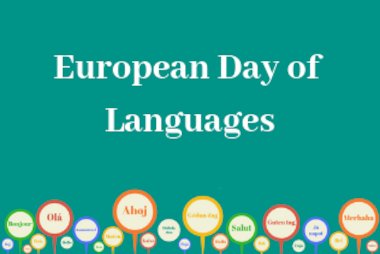Keep track of MFL festive holidays!

At this time of year it can seem like the celebrations never stop and in France, Spain, and Germany this certainly feels the case with so many holidays that it’s difficult to keep track! We’ve written a handy timeline of all the events, as well as a look at how each holiday is celebrated.


5th December: This is the day children place their shoes in front of the fireplace and sing songs to the saint ready for St Nicholas Day (jour de la St Nicolas) the following day. They believe that he will arrive on his donkey carrying treats and gifts for children.
In the city of Lyon there is a Festival of Lights (La Fête des Lumières). It is a four day festival, starting on 5 December and finishing on 8 December.
An important French tradition is to display une crèche somewhere in your home. This tradition is most popular in the area of Provence. La crèche is a pretty arrangement of little buildings and figurines surrounding the Christmas crib. The figurines of The Three Kings appear on the night of 5 January. It is the tradition in France to display the Nativity scene until the 2 February.
6th December: St Nicholas Day (la fête de Saint Nicolas). Children wake to find their shoes filled with treats if they’ve been good or twigs if they’ve been bad. Most children will receive some twigs in addition to their presents for any times they have been naughty.
In many French towns, there are parades on this day with beautifully decorated floats, enacting the arrival of Saint Nicholas and his evil companion le Père Fouettard.
8th December: The 8 December is a celebration in honour of the The Virgin Mary. In Lyon, the final day of the Festival of Lights involves everyone placing a candle on their window sills. The buildings are lit up with coloured lights and the streets are decorated with illuminations.

24th December: Christmas Eve. At around midnight, French families eat a special dinner (Le Réveillon de Noël). Religious families will often attend a mignight mass.
French children leave their shoes out in front of the fireplace in the hope that Father Christmas (le Père Noël) will fill them with treats and will place gifts on and around the Christmas tree (le sapin de Noël) for when they awake on Christmas morning.
Another celebration, in some parts of France, is that 13 different desserts are eaten! All the desserts are made from different types of Fruit, Nuts and Pastries. These thirteen treats are said to represent Jesus and his twelve apostles at the Last Supper.
25th December: French families will often gather and spend time together around another meal. Some children will receive presents whereas other families may prefer to do this on Christmas Eve. It is a day of celebration for everyone.
6th January: Epiphany (L’ Épiphanie). During the first days of January, the Kings’ Cake (La galette des Rois) is prepared. The cake is officially eaten on 6 January in celebration of the journey of The Three Kings (Les Rois Mages). The Kings’ cake is round and made of puff pastry. Inside a special trinket is hidden (une fève). It used to be the tradition to find a ‘dried bean’ inside the cake but nowadays the trinkets can be anything from lucky horseshoes to little figurines.
2nd February: La Chandeleur. The Nativity is taken down, forty days after Christmas.


8th December– Feast of the Immaculate Conception (El Día de la Inmaculada). This is a celebration in honour of The Virgin Mary and there are processions with music and singing. It is a national holiday.
La Inmaculada is the patron saint of the city of Sevilla, so there are many important events taking place in that city on 8 December such as children dancing a special dance (La Danza de los Seises) around the statue of La Inmaculada in La Plaza del Triunfo.
From around the 8 December, in Catalania, families place a special Christmas log (El Tió de Nadal) in a prominent position in the house. Often, the log will have a painted face and stand on legs! The log is kept covered with a red cloth and is looked after like a pet until Christmas Day. Children make sure that he is kept warmly covered and pretend to feed him every day, just like feeding a doll.
The Christmas Nativity Scene (un portal de Belén), an important Spanish ornament will go up in the home from the 8th.
21st December – In a few cities including Granada the celebration of bonfires (Hogueras) takes place.
22nd December – All over Spain people never stray far from a TV or radio as the Christmas lottery is drawn over a period of many hours.
24th December – Christmas Eve (Nochebuena). The King of Spain makes a traditional Christmas Eve speech (El Discurso Nacional De Su Majestad El Rey).
Families eat a special meal on Christmas Eve called La Cena de Nochebuena.

In Spain, Christmas Eve is a night for parties! There is a Spanish saying:- Esta noche es Nochebuena y no es noche de dormir.
25th December – On Christmas Day, many Spanish children receive some little gifts from Father Christmas (Papá Noel). In the Basque country on Christmas Eve, children’s presents are delivered by a magical man called Olentzero, an overweight, beret-wearing, pipe-smoking man.
Another large family meal at lunchtime is common though it’s becoming more common to see families eating out on the afternoon of Christmas day.
In Catalonia, on Christmas Day, children hit El Tió de Nadal with a stick whilst singing a traditional song. After singing the song and hitting the log with a stick, they put their hands under the cover to see if the log has produced anything. (When children aren’t looking, grown-ups place the gifts under the cover!) Children keep singing songs and hitting the log to have more goodies. Eventually, when they can only find something like an onion or garlic, it means that the gifts have run out and the game is over! In the past, the idea of hitting the log to make it produce gifts was believed to bring good luck for the harvests during the next year.
28th December – This is the Day of Holy Innocents (Santos Inocentes). It is similar to April Fools’ Day because people play tricks on one another, calling people innocent if they fall for them.

31st December – New Year’s Eve (La Nochevieja). It is the tradition to eat twelve grapes at midnight – one grape for each stroke of the clock and for each month of the year to come for twelve months of luck. The grapes are known as the lucky grapes (las uvas de la suerte) or the twelve grapes (las doce uvas).
5th January – There are processions (la cabalgata de Reyes) all over Spain this evening where sweets are thrown from the floats to all the people who come out to watch. It celebrates the journey of the Three Kings as they followed the star to find the Baby Jesus, carrying their gifts of gold, frankincense and myrrh.
A special cake is prepared (el roscón de Reyes) which is a ring-shape and is covered in coloured sweets and jellies. The colourful decoration represents the sparkling jewels worn by The Three Kings (Los Reyes Magos). Inside the cake, there is a lucky charm. The belief is that if you find the charm in your cake, it will bring you good luck for the New Year.
On the night of 5 January, children place their shoes (zapatos) under the Christmas tree or in another area where the Kings will find them.
6th January – This is the Feast of the Epiphany (Día de los Reyes Magos). This is the day most Spanish children get presents. The Three Kings arrive during the night of 5 January and children wake to find their shoes filled with treats and surrounded by presents! Children write letters to Los Reyes Magos, mentioning the gifts that they would like to receive. Children also leave out plates of food for the Kings and bowls of water for the Kings’ camels.


1st December: Advent begins. Advent is a big part of the Christmas celebrations in Germany. Several different types of Advent calendars are used in German homes. As well as the traditional one made of card containing chocolate, there are ones made out of a wreath of Fir tree branches with 24 decorated boxes or bags hanging from it. Each box or bag has a little present in it.
In the West, South-west and South of Germany (the more Catholic parts of the country), children will begin to leave letters on their windowsills addressed to the Christkind asking for presents. The letters to the Christkind are sometimes decorated with sugar glued to the envelope to make them sparkly and attractive to look at. The Christkind is often described as a young girl with ‘Christ like’ qualities. In Nürnberg a young girl is chosen every year to participate in a parade as the Christkind. She wears a long white and gold dress, has long blond curly hair and wears a gold crown and sometimes wings like an angel. This is similar to St Lucia is Sweden.
From the first, a custom called Wichteln may begin wherein you secretly place small presents in people’s bags/pockets.
6th December: St Nicholas Day (der Nikolaustag). In Central, North and East Germany, children write to Father Christmas (Weihnachtsmann). They hope that ‘der Nikolaus’ will bring you some small gifts, such as sweets and chocolate on the 6th December (St Nicholas’s Day). He comes in the night between the 5th and the 6th and puts the presents into the shoes of the children, who usually place them by their doors on the previous evening. In some regions of

24th December: Christmas Eve. This is the main day when German families will exchange presents. They will eat a meal together which normally avoids meat, instead having carp and potato salad.
25th December: Christmas Day (Erster Feiertag – first holiday). German families will eat a bigger meal, commonly featuring suckling pig or roasted goose. Believers of the Christkindl will find she has left gifts the previous night.
26th December: Boxing Day (Zweiter Feiertag – second holiday)
31st December: New Year’s Eve (Silvester). The last day of the year is the saint’s day of pope Silvester, who died 31 December 335. This is an important day in Germany and many celebrations take place. Some people believe modern fireworks at New Year originate from the German tradition of making as much noise as possible to ward off evil spirits.
Similar Posts
-

Festive Language-Learning Activities
Do you teach English, French, German or Spanish? Check out these Christmassy downloads to bring the festive spirit to your classroom!
-

Best MFL Choices on Netflix
Check out our pick of the best foreign-language tv shows and films available on UK Netflix.

